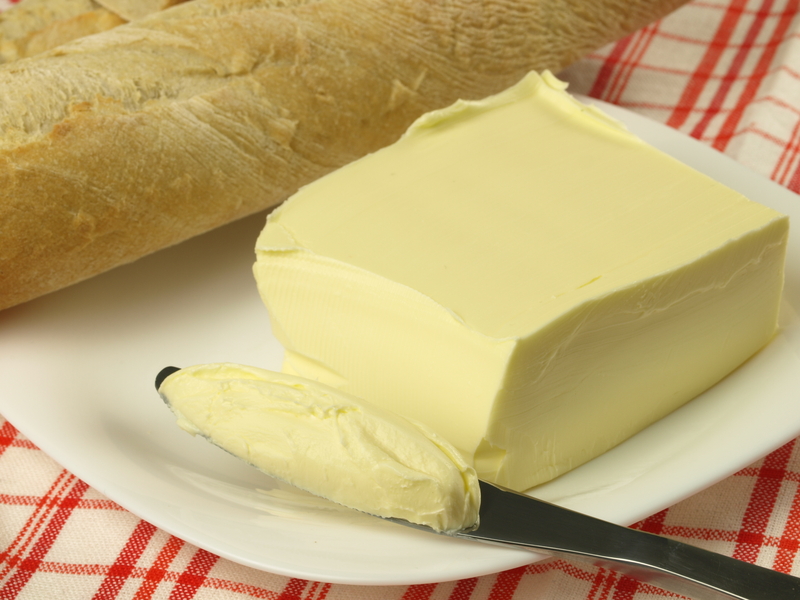Maintaining Clean Curtains: A Practical Guide
Posted on 27/09/2025
Maintaining Clean Curtains: A Practical Guide
Clean curtains are essential for a healthy, fresh, and visually appealing indoor environment. Often overlooked, curtains accumulate dust, allergens, and odors, impacting not just a room's aesthetic but also your well-being. This comprehensive, SEO-optimized article explores curtain cleaning, maintenance tips, and best practices for keeping your draperies pristine. Read on to discover the ultimate steps for maintaining clean curtains and ensuring your home always looks its best.
Why Keeping Your Curtains Clean Matters
While curtains enhance interior decor, neglecting regular curtain cleaning can lead to:
- Buildup of dust, dirt, and allergens
- Increased risk of allergies or respiratory issues
- Faded colors and fabric deterioration
- Lingering household odors
Keeping curtains clean is crucial for a healthy home and long-lasting window treatments.

Understanding Different Curtain Materials
Before diving into cleaning methods, it is essential to identify the material of your curtains. Curtain fabrics vary in their care needs, sensitivity to moisture, and cleaning approaches. Common types include:
- Cotton: Easy to wash, but may shrink.
- Polyester: Durable, resists wrinkles and shrinkage.
- Linen: Requires gentle handling; often dry-clean recommended.
- Silk: Very delicate; usually needs professional cleaning.
- Velvet: Most require dry cleaning.
- Sheer or Lace: Needs careful, often hand-washing.
Always check care labels before starting a curtain cleaning routine.
How Often Should You Clean Curtains?
There isn't a one-size-fits-all answer. However, a useful curtain maintenance schedule involves:
- Weekly: Light dusting or vacuuming to remove surface dust and allergens.
- Monthly: Deep vacuum and spot cleaning as necessary for visible stains or marks.
- Biannually: Thorough washing or dry cleaning, depending on the curtain type.
High-traffic homes, or those with pets and allergies, may require more frequent cleaning.
Key Factors Affecting Curtain Cleaning Frequency
- Proximity to kitchens or smoking areas (more frequent cleaning required)
- Open windows (curtains gather more dust and pollution)
- Pets and children (increased grime and stains)
Regular Maintenance for Pristine Curtains
Dusting and Vacuuming
Regular dust removal is the simplest way to keep your curtains spotless. Follow these easy steps:
- Use a vacuum's soft brush attachment and start from the top, moving down with gentle strokes.
- For delicate materials like lace or silk, use a handheld vacuum at its lowest setting or a lint roller.
Shaking Out Curtains
- Once a week, gently shake curtains outdoors to remove loose dust and particles.
- Use caution with delicate or heavy curtains to avoid damage.
Spot Cleaning Stains and Spots
For accidental spills or stains, acting promptly delivers the best results:
- Identify the stain type (grease, food, ink, etc.).
- Blot gently with a clean, damp cloth. Avoid rubbing, which spreads the stain.
- Use a mild detergent diluted in water for tougher spots. Test on an inconspicuous area first.
- For persistent stains, consider professional curtain cleaning services.
Deep Cleaning Curtains: The Ultimate Guide
1. Machine Washing Curtains
Many curtains, especially cotton and polyester, are machine washable. Here's how to deep clean them:
- Remove all hardware and detachable hooks.
- Shake out loose dust and dirt.
- Wash curtains in cold water on a gentle cycle with mild detergent.
- Avoid bleach which can cause discoloration.
- If possible, air dry curtains to reduce shrinkage and wear from drying machines.
Tip: Check the care label before machine washing. Some linings or materials may require dry cleaning.
2. Hand Washing Curtains
Hand washing is safer for delicate fabrics:
- Fill a large tub or basin with lukewarm water and mild soap.
- Gently submerge the curtains, swish lightly, and avoid aggressive wringing.
- Rinse thoroughly in cold water.
- Lay flat or hang to air dry, ensuring they keep their shape.
3. Steam Cleaning Curtains
Steam cleaners are effective for heavy or non-washable curtains:
- Use a quality steam cleaner with an upholstery or drapery attachment.
- Work from the top down, holding the steamer at a slight distance to avoid water spots.
- Allow curtains to dry fully before rehanging.
4. Professional Curtain Cleaning
For silk, velvet, embroidery, or non-washable linings, professional services are the safest option. Some benefits include:
- Specialized stain removal
- Preventing color loss and fiber damage
- Convenience and expertise
Curtain Cleaning Tips for Special Situations
Removing Pet Hair from Curtains
- Use a lint roller or slightly damp microfiber cloth before washing or vacuuming.
- Antistatic spray helps repel future pet hair buildup.
Reducing Odors in Curtains
- Airing out curtains in sunlight helps eliminate odors and kills bacteria.
- Sprinkle lightly with baking soda, let sit, then vacuum off.
- Fabric refresher sprays are a quick fix, but deep cleaning is best for persistent smells.
Mold and Mildew Prevention
- Ensure rooms are well-ventilated and keep windows closed during damp weather.
- If you spot mold, wash curtains promptly in hot water (if fabric allows).
- Consult professional cleaners for severe cases.
Curtain Maintenance Do's and Don'ts
- Do follow care instructions for each fabric type.
- Do use gentle cleaning solutions and avoid harsh chemicals.
- Do check for colorfastness on a hidden area before using any new cleaning product.
- Don't machine-wash non-washable fabrics like silk or velvet.
- Don't hang up wet or damp curtains--always dry completely first to prevent mildew.
- Don't overexpose colored curtains to direct sunlight for prolonged periods, as this fades fabrics.
How to Keep Curtains Clean Longer
Practical Preventative Measures
- Install blinds or shades behind curtains to reduce dust and UV exposure.
- Close windows on windy days and clean windows regularly to prevent dust transfer.
- If possible, use machine-washable or easy-care curtain fabrics in high-traffic areas.
- Rotate curtains (swap with backups) to allow for cleaning and even wear.
Ironing and Steaming Curtains After Washing
Most curtains will have wrinkles after cleaning. To ensure a crisp, fresh appearance:
- Check the fabric care label for recommended ironing temperatures.
- Iron on the reverse side, especially for decorated or delicate fabrics.
- Steamers are excellent for removing wrinkles while curtains hang--ideal for large or heavy drapes.
Storing Curtains Safely
Proper storage is vital for off-season curtains or during renovations:
- Wash, dry, and iron curtains before long-term storage.
- Fold loosely and store in breathable cotton bags--not plastic, which can trap moisture and cause mildew.
- Store in a dry, clean area away from direct sunlight and pests.
Signs Your Curtains Need Replacing
- Fabric is permanently stained or faded.
- Noticeable wear, fraying, or holes in the material.
- Persistent odors or mold even after thorough cleaning.
If your draperies display these symptoms, consider replacing them to maintain a fresh, healthy living space.

Frequently Asked Questions on Curtain Cleaning
Can you wash curtains without taking them down?
You can use handheld steam cleaners, vacuuming, or spot cleaning while curtains hang. However, for deep cleaning, removal is recommended.
Should you iron curtains when wet or dry?
Slightly damp curtains iron out wrinkles more easily, but always follow care recommendations for best results.
Do blackout and lined curtains need special care?
Yes, because thermal or blackout linings can be sensitive to heat and moisture. Consult manufacturer's instructions before cleaning.
Conclusion: Enjoy Fresh, Clean Curtains Year-Round
Maintaining clean curtains doesn't have to be a daunting task. With the right routine, appropriate cleaning techniques, and a little preventative care, your curtains will stay beautiful, allergy-free, and long-lasting. Remember to identify fabric types, follow care labels, and act swiftly on stains and dust. Clean curtains brighten your rooms, protect your family's health, and add effortless style.
For more tips on curtain maintenance and home care, bookmark this guide and revisit each season. Your windows, and your well-being, will thank you!





